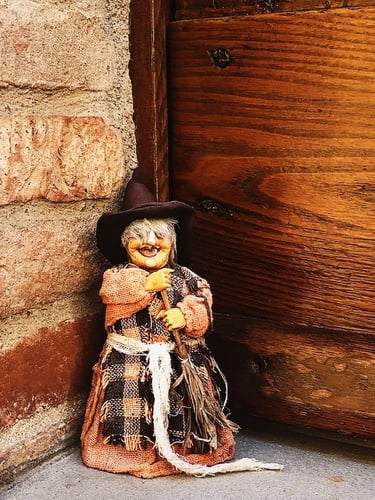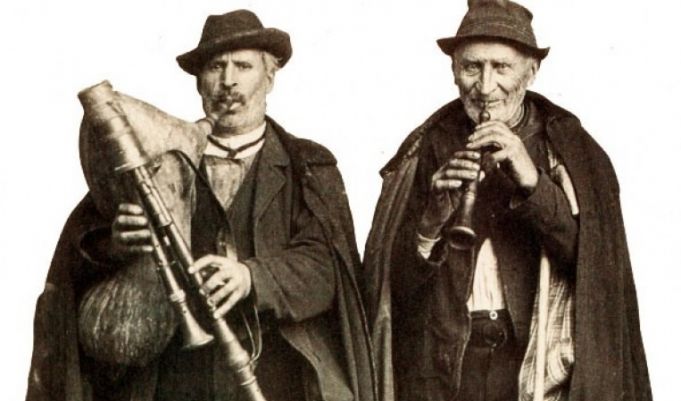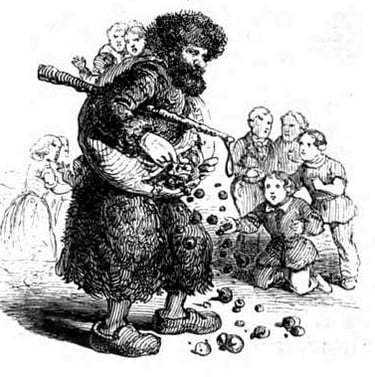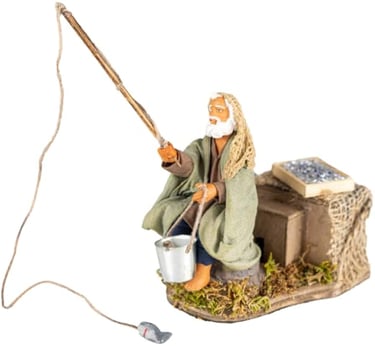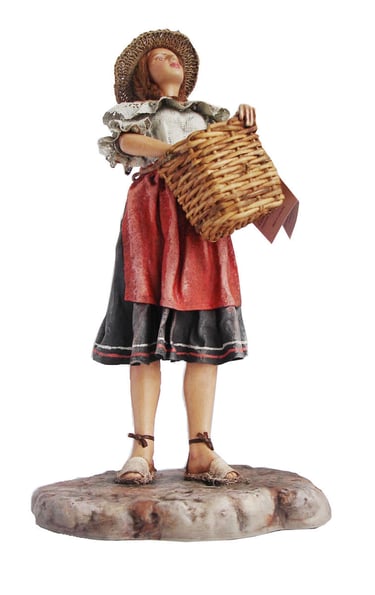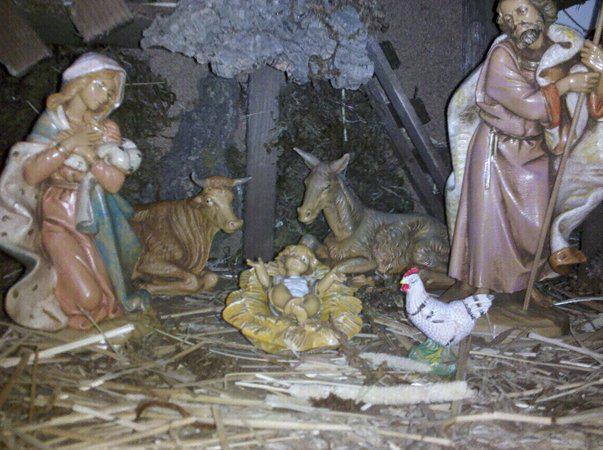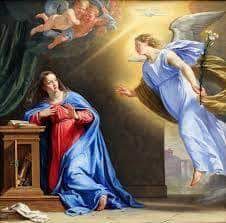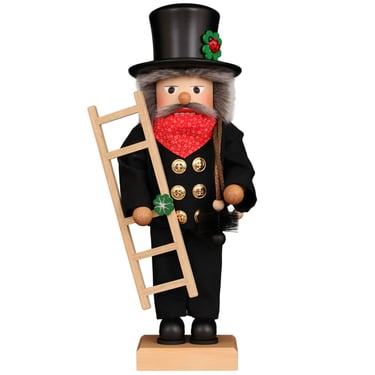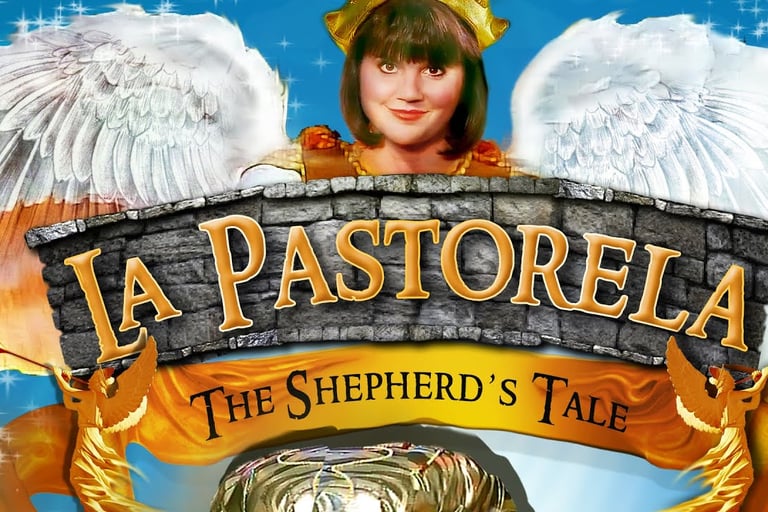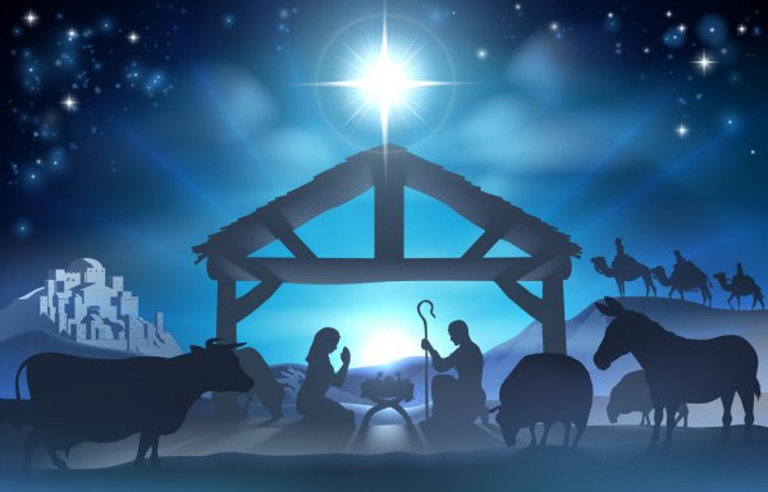20 Fascinating Nativity Figures You’ve Likely Never Heard Of
Discover 20 unique and obscure Nativity figures from around the world! Dive into fascinating traditions and uncover the hidden stars of the Nativity scene
Grace Callahan
12/10/202412 min read
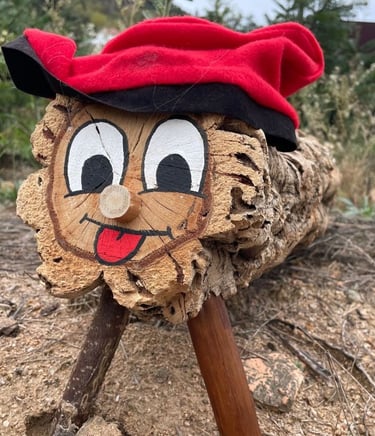

1. The Caganer from Catalonia: A Humorous Twist to Your Nativity Scene
Cultural Background: The Caganer is one of the most iconic figures in Catalonian nativity scenes. This figure, often a peasant man, is depicted crouching with his pants down, doing his business behind the stable. Historically, this figure dates back to the 18th century, and while it’s considered somewhat irreverent, it plays an important role in Catalan holiday traditions. Traditionally, the Caganer is placed away from the main nativity scene, often hidden, so that children can enjoy the act of discovering it.
Why It’s Special: The Caganer represents a very specific cultural sense of humor that contrasts with the more sacred elements of the nativity scene. His role is often misunderstood outside of Catalonia, but locals believe he brings good luck and fertility. The figure is symbolic of the earth's productivity and renewal, making it a meaningful, albeit playful, addition to the nativity.
2. The Shepherd with His Sheep from Italy: A Rustic Touch
Cultural Background: Shepherds have been a central part of Italian nativity scenes for centuries, especially in regions like Naples and Sicily. In traditional Italian presepe (nativity scenes), shepherds are depicted as humble figures, often wearing simple clothes and carrying bags or staffs. They are frequently shown with their flocks of sheep, reinforcing their role as caretakers of the land.
Why It’s Special: Shepherds are vital figures in the nativity story, being the first to receive the announcement of Jesus' birth. Italian nativity scenes often show them in action, whether they're resting, gazing upon the baby Jesus, or playing musical instruments. The shepherds bring a rustic and pastoral feel to the scene, reflecting the simplicity and humility of Christ’s birth in a manger.
3. The 'Tío de Nadal' from Catalonia: A Fun, Folk Tradition
Cultural Background: The Tío de Nadal (literally "Christmas Log") is a popular figure in Catalonian households during the Christmas season. This character isn’t directly part of the nativity scene but is considered a symbol of the Christmas festivities. The Tío de Nadal is a wooden log decorated with a red hat and blanket. On Christmas Eve, children “beat” the log with sticks while singing traditional songs, and then they “find” gifts that have been hidden inside the log.
Why It’s Special: The Tío de Nadal is an example of Catalonia’s unique and playful Christmas traditions. While this log is not directly related to the nativity, it adds a sense of fun and festivity to the season, showing the joyful and communal spirit that surrounds the holiday. The figure represents a deeper connection to nature and the cycles of life and death, as logs were traditionally burned for warmth.
4. La Befana from Italy: The Christmas Witch
Cultural Background: La Befana is a beloved figure in Italian folklore who is said to visit children on the night of January 5th, the eve of the Epiphany. The legend tells of an old woman who was approached by the Wise Men on their way to Bethlehem. She declined to join them but later regretted her decision and tried to follow them, bringing gifts to the baby Jesus. She’s depicted as a kind, yet slightly mischievous, old woman flying on a broomstick, carrying a basket of presents.
Why It’s Special: La Befana’s visit is a major tradition in Italy, and her gifts can range from sweet treats to coal (for naughty children). Her presence in nativity scenes adds a distinctly Italian folk element to Christmas celebrations. Unlike Santa Claus, La Befana is tied to the Epiphany, highlighting the importance of the visit of the Three Kings in Italian culture. She’s a figure of both mystery and kindness, emphasizing the theme of redemption and generosity.
5. The Zampognari from Italy: Musical Shepherds
Cultural Background: Zampognari are traditional Italian bagpipe players who often appear in nativity scenes, especially in southern Italy. The name “Zampognari” comes from the zampogna, a traditional bagpipe used in Italian folk music. The figures are depicted as shepherds who play these instruments, adding musical joy to the holiday atmosphere. In regions like Abruzzo and Molise, Zampognari are a symbol of both the shepherding life and the festive music that surrounds Christmas.
Why It’s Special: The Zampognari embody the connection between music and the nativity story, particularly highlighting the pastoral and rustic elements of Christ’s birth. Music has always been an essential part of Italian Christmas celebrations, and the Zampognari bring a charming and melodic aspect to nativity scenes. Their inclusion emphasizes the cultural significance of music in creating a joyful and spiritual atmosphere during Christmas.
6. Père Fouettard from France: The Scary Counterpart to Saint Nicholas
Cultural Background: Père Fouettard is a figure from French folklore who serves as a foil to Saint Nicholas. While Saint Nicholas rewards well-behaved children, Père Fouettard is the one who punishes those who have been naughty. Traditionally depicted as a stern, bearded man carrying a whip, Père Fouettard’s role in French Christmas traditions is to remind children of the consequences of misbehavior. He is especially popular in the regions of northeastern France and parts of Belgium.
Why It’s Special: Père Fouettard represents the duality of Christmas traditions, showing that rewards come with good behavior but that consequences exist for those who misbehave. While many cultures focus on the joyful aspects of Christmas, Père Fouettard serves as a reminder of discipline and responsibility. His inclusion in nativity scenes adds a darker, more complex layer to the Christmas narrative, offering a balance between joy and caution.
7. The Pollito from Guatemala: A Cultural Symbol of Christmas
Cultural Background: In Guatemala, the Pollito (little chick) is a traditional figure found in nativity scenes. This small, often brightly colored figure represents new life and the agricultural traditions of rural Guatemala. The Pollito is typically placed around the manger to symbolize the theme of fertility and growth, with chickens and other farm animals playing a central role in Guatemalan Christmas celebrations.
Why It’s Special: The Pollito serves as a reminder of the rural, agricultural life that plays a significant role in Guatemalan culture. It connects the nativity story to the everyday experiences of families who live off the land, reflecting the deep connection between Christ’s birth and the renewal of life. The Pollito’s presence brings a touch of rural charm and authenticity to any nativity scene.
8. Jesús en Paille from France: A Humble Baby Jesus
Cultural Background: The figure of Jesús en Paille, or “Baby Jesus in Straw,” is a simple yet poignant representation of the Christ child, seen most commonly in French nativity scenes. This figure is typically shown lying in a manger surrounded by straw, emphasizing the humility and simplicity of Christ’s birth. The use of straw reflects the traditional materials that would have been used for bedding during that time period.
Why It’s Special: Jesús en Paille represents the core values of humility, simplicity, and peace. By depicting Baby Jesus in such a modest way, this figure reminds the viewer of the lowly circumstances of Christ’s birth and the unpretentious nature of his arrival. It provides a moment of reflection on the spiritual significance of Christmas beyond the material aspects of the holiday season.
9. The Fishermen in Sicilian Nativity Scenes: Maritime Tradition
Cultural Background: The fishermen figures are a unique addition to Sicilian nativity scenes, reflecting the island’s strong maritime heritage. These figures are often shown with boats, fish, and nets, symbolizing the importance of the sea to the Sicilian economy and culture. Fishermen were among the first disciples of Jesus, which may explain their prominence in nativity depictions on the island.
Why It’s Special: The inclusion of fishermen emphasizes the connection between Jesus’ message and the common people, particularly those who made their living through hard work. It also ties into the idea of Christ calling “fishers of men” to spread the gospel. The fishermen figures add a regional flavor to the nativity scene, reflecting the cultural importance of the sea and the livelihood of the island’s people.
10. Mujer con Cesta from Colombia: A Rural Representation
Cultural Background: The Mujer con Cesta, or “woman with basket,” is a traditional figure found in nativity scenes from Colombia. Often depicted as a woman carrying a basket filled with food or goods, this figure represents the hardworking, everyday women who are essential to Colombian rural life. The Mujer con Cesta is part of a broader tradition of portraying scenes of rural life in nativity displays, where the focus is often on the simplicity and richness of agricultural life.
Why It’s Special: The Mujer con Cesta brings a grounded, authentic element to nativity scenes. She is a symbol of the vital role that women play in the family and in society. Her inclusion emphasizes the theme of labor, nurturing, and provision, which are central to the nativity story and its focus on humble beginnings.
11. The Rooster from Mexico: A Symbol of Vigilance and New Beginnings
Cultural Background: The rooster is a common figure in Mexican nativity scenes, especially in the states of Oaxaca and Michoacán. Often depicted in vibrant colors, the rooster holds significance in Mexican culture as a symbol of the dawn and new beginnings. Its crowing represents the arrival of light after the darkness of night, echoing the symbolism of Christ as the Light of the World.
Why It’s Special: The rooster in nativity scenes adds a deeper layer of meaning, reflecting themes of vigilance and awakening. In a broader spiritual context, the rooster can be seen as a reminder of Christ's resurrection and the hope it brings to humanity. This figure brings a burst of color and energy to the nativity, while also tying into the universal symbolism of light and renewal.
12. The Donaña from Andalusia: A Symbol of Feminine Strength
Cultural Background: In Andalusia, Spain, the Donaña figure is a representation of a woman dressed in traditional Andalusian attire, often carrying baskets or other goods. She embodies the strong, hardworking women who were integral to rural Spanish life, particularly in the southern regions. The Donaña figure is frequently seen in nativity scenes throughout Andalusia, adding a local flair to the traditional depiction of the nativity.
Why It’s Special: The Donaña represents feminine strength, nurturing, and the importance of women in family and community life. Her inclusion in the nativity reflects the cultural value placed on women’s roles in maintaining home and hearth. The Donaña also emphasizes the connection between daily labor and spiritual significance, with her simple, practical role aligning with the humble beginnings of Christ’s birth.
13. The Annunciata from Italy: Bringing the Angel Gabriel to Life
Cultural Background: The Annunciata, often depicted as the Virgin Mary being visited by the Angel Gabriel, is a staple figure in Italian nativity scenes. This figure emphasizes the moment of the Annunciation, where Mary is told she will conceive the Son of God. The figure of Gabriel, sometimes shown with a scroll or trumpet, is integral in highlighting the divine intervention in human history. In Italy, this moment is often depicted in a scene separate from the nativity itself, focusing on the divine promise that precedes Christ’s birth.
Why It’s Special: The Annunciata is special because it represents the divine moment of the Incarnation, where heaven and earth met in the form of a child. The story of the Annunciation is crucial in understanding the mystery of the Incarnation, making this figure a powerful addition to any nativity. It shows the pivotal moment when the world is forever changed, setting the stage for the birth of Jesus.
14. The Belenista from Spain: The Passion of Creating Nativity Scenes
Cultural Background: The term Belenista refers to the people from Spain who dedicate themselves to the art of creating elaborate nativity scenes, or belenes. These craftsmen (and women) are highly skilled at constructing intricate, life-sized or miniature nativity displays that can be seen in public squares, churches, and homes throughout Spain. The Belenista is often depicted as a person adding final touches to a nativity scene or placing figurines within a well-crafted setting.
Why It’s Special: The Belenista highlights the passion and artistry involved in nativity scene creation. It is more than just a religious act—it is an expression of community, craftsmanship, and cultural heritage. By including the Belenista figure in nativity scenes, the tradition of the nativity becomes part of a living, evolving cultural celebration that brings people together to honor the Christmas story.
15. The Mule and Donkey from Spain: Humble Witnesses of Christ’s Birth
Cultural Background: The mule and donkey are often featured in Spanish nativity scenes, as well as in many Mediterranean nativity traditions. These animals were likely present at the birth of Jesus, as they were common among the rural populations of Bethlehem. The mule, with its calm demeanor, and the donkey, known for its endurance, both symbolize the humble and practical aspects of life that surrounded the holy birth.
Why It’s Special: The mule and donkey are key figures in representing the simplicity and humility of Christ’s nativity. Their inclusion speaks to the lowly circumstances in which Jesus was born and emphasizes the message that Christ came for the humble and poor. These animals also add a pastoral charm to the nativity, often shown near the manger, looking on with quiet reverence.
16. The Chimney Sweep from Germany: A Good Luck Charm for the New Year
Cultural Background: The chimney sweep, or “Schornsteinfeger,” is a traditional figure in German nativity scenes. Known for his role in ensuring homes were safe from fire hazards, the chimney sweep symbolizes good fortune and the hope for a clean slate in the new year. In German folklore, it’s believed that encountering a chimney sweep brings good luck, and this is reflected in his inclusion in nativity displays.
Why It’s Special: The chimney sweep is a reminder of the passing of time and the hopes for a fresh start. His presence adds an element of both practicality and good fortune, as he not only contributes to the safety of the home but also symbolizes the spiritual cleaning and renewal that comes with the birth of Christ. The chimney sweep’s cheerful presence offers a positive, optimistic message at the start of the holiday season.
17. The Pastorella from Argentina: A Young Shepherd Girl
Cultural Background: In Argentina, particularly in Buenos Aires, nativity scenes often feature the Pastorella, a young shepherd girl who is a companion to the shepherds. She is usually depicted wearing a brightly colored dress and headscarf, sometimes carrying a small lamb or flower. The Pastorella represents the role of women in the rural community and the nurturing aspects of life in the Andes and other rural regions.
Why It’s Special: The Pastorella is symbolic of innocence, youth, and the nurturing role women have in society. She reminds us of the importance of love, care, and community within the nativity story. Her youthful energy also adds a sense of warmth and optimism to the scene, echoing the joyous spirit of Christ’s birth.
18. The Three Wise Men from the Middle East: Bringing Gifts of Gold, Frankincense, and Myrrh
Cultural Background: The Three Wise Men, or Magi, are an essential part of nativity scenes worldwide, with their origins deeply rooted in Middle Eastern and Persian traditions. They represent the diversity of the world’s peoples, coming from different nations and bringing valuable gifts for the newborn King. The Three Kings have been celebrated in numerous cultures, with unique interpretations of their gifts, costumes, and journey to Bethlehem.
Why It’s Special: The Three Wise Men represent the universality of Christ’s message. Their gifts of gold, frankincense, and myrrh symbolize royalty, divinity, and mortality, respectively. Their inclusion in the nativity scene reminds viewers of the wide-reaching significance of Christ’s birth, which extended beyond the small town of Bethlehem to all nations.
19. The Crib from Poland: A Magnificent Display of Artistry
Cultural Background: In Poland, the tradition of creating elaborate nativity scenes known as “Szopki” has a long history, especially in the city of Kraków. These nativity scenes are often intricate, multi-tiered structures adorned with colorful decorations, architectural elements, and figurines. The Szopki often depict local landmarks and historical figures, blending the sacred with the secular in a visually stunning way.
Why It’s Special: The Polish Szopka is a fusion of artistic creativity and religious devotion. By incorporating local culture and heritage into the nativity scene, it becomes a reflection of Polish identity while still honoring the universal story of Christ’s birth. The elaborate nature of the Szopka elevates the nativity display to a true work of art, celebrating both faith and national pride.
20. The Peddler from Eastern Europe: A Traveling Merchant
Cultural Background: The Peddler figure is often seen in Eastern European nativity scenes, especially in places like Hungary, Poland, and Slovakia. Depicted as a traveling merchant or tradesman, the Peddler is usually shown with a basket of goods for sale, symbolizing the daily struggles and trades of the common people. His presence in nativity scenes reflects the importance of labor and commerce in sustaining life, even during the holy season.
Why It’s Special: The Peddler represents the hardworking, entrepreneurial spirit that is an essential part of Eastern European culture. His inclusion reminds us that Christ came not just for the rich and powerful but also for the everyday person, symbolizing the universality of Christ’s message. The Peddler adds a layer of realism to the nativity scene, connecting the sacred with the everyday lives of ordinary people.
Each of these figures brings a unique cultural element to nativity scenes, highlighting the diversity and richness of Christmas traditions across the world. By incorporating them into your nativity display, you’re not just celebrating the birth of Jesus but also honoring the deep cultural stories and meanings that have been passed down through generations.
